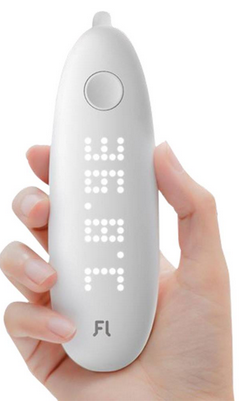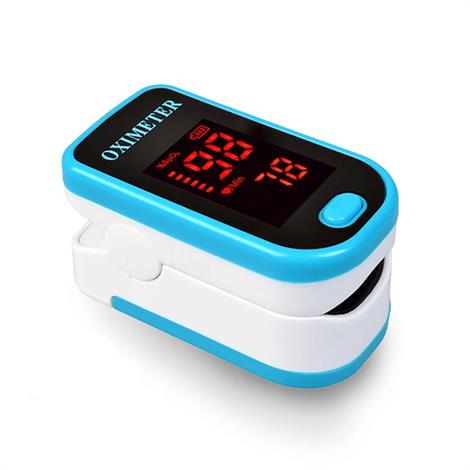Have you ever wondered what percent of water your body has? Or perhaps you have wondered if your body is getting as much oxygen as it needs, or what your blood pressure normally is? Perhaps you might believe that these are things that you can only know if you are able to get an appointment with an appropriate healthcare provider. While it is true that perhaps a healthcare provider might be able to find these things out for you, there is a nowadays a lot of personal health monitoring devices that allows you do get a lot of information about your health from the comfort of your home. Following are some of the personal health monitoring devices that everyone should have at home.
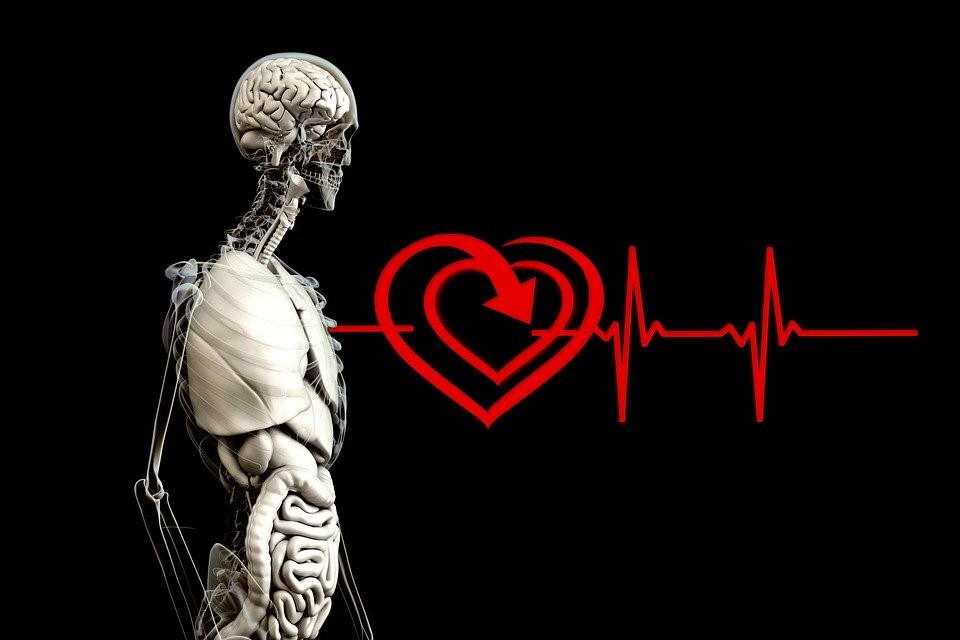
The Argument for Having Personal Health Monitoring Devices at Home
It is good to keep personal health monitoring devices at home because sometimes you want to take a reading during a time when you are not feeling quite right. It is good to have these because you don’t know when you need them. These are especially important to have to keep track of your health and that of your loved ones over time. These are also especially important during times that warrant a health reading to better ascertain what is wrong with the person. It can give your information to provide your healthcare provider so they can make better informed decisions on your health based not just on reading while you are at their office, but also based on readings that you provide them from your day to day life.
Blood Pressure Monitor
If in the middle of the night you feel light headed or have a terrible headache, and wonder if perhaps your blood pressure is the cause of it, it is good to be able to take out your blood pressure monitor than and be able to figure out if it is in fact the cause.
There are various reasons why a blood pressure might drop or go up. Some of these variations may be normal and expected. Others warrant some corrective action. And others warrant emergency care.
It blood pressure might drop if you are dehydrated. You can become dehydrated due to drinking, for example, a lot of coffee or alcohol, and not drinking enough water. If you notice that your blood pressure is low and also realize you haven’t been drinking enough hydrating liquids, you will know that you have to change your habits.
On the other hand, high blood pressure can go up due to stress or anxiety. It can also go up dramatically when you are having a stroke or a heart attack. It can also go up after drinking coffee or if you have just exercised.
That is why it is important to have a blood pressure monitor at home. Although there are blood pressure monitors that work one the wrist and even the finger, the ones that are most recommendable are the ones that you put on your arm. Be sure the ones that are automatic – so you just need to strap it on your arm and turn it on.
The ones that are used at the doctor’s office would not be suitable because you would not be able to take your blood pressure yourself. Apart from that, they require special training to use. The YHE BP Doctor Pro Blood Pressure Smart Watch is an example of a blood pressure monitor that would be suitable for home use. It requires no special training and is super practical if you are serious of regularly monitoring your blood pressure.
You might be interested in: How to Take Your Blood Pressure at Home
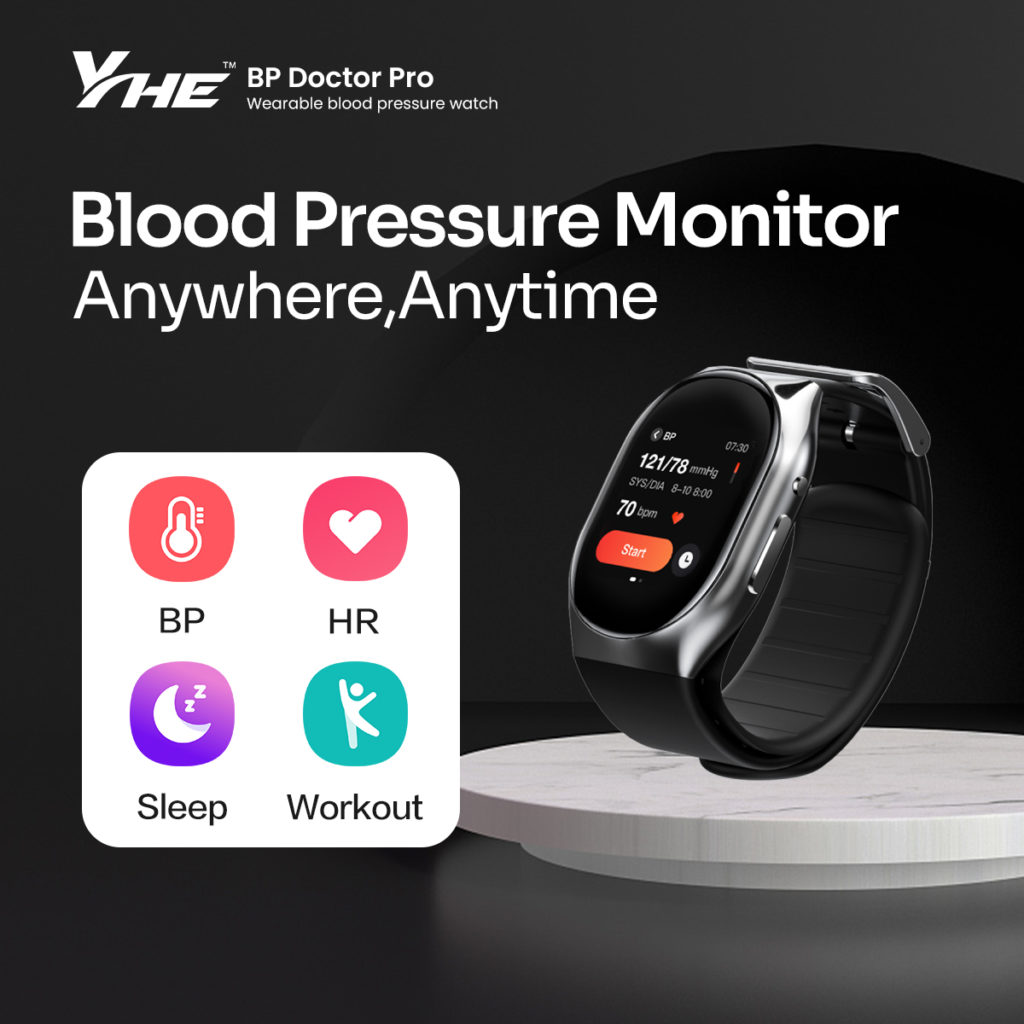
from: wearwiz
Thermometer
A thermometer is another personal health monitoring device that everyone should have at their home. This came to light now more than ever with the coronavirus pandemic. During the pandemic, it is recommended that everyone take their temperature twice daily. The reason that doing so is so important is because fever is one of the symptoms that many people with the coronavirus present with. Sometimes it is the only symptom they present with. And sometimes they might not even notice that they have a fever.
If you have a thermometer at home, you would be able to keep a close eye on any temperature changes that you or your family members are experiencing. If someone presents with an elevated temperature, you can take extra precautions with them and be able to seek care early on, as needed. While some fluctuations in body temperature are normal and expected, persistent fevers are usually associated with infections or inflammation.
There are many different types of thermometers available. These include oral thermometers, rectal thermometers, arm pit thermometers, ear thermometers, and forehead thermometers. There are even thermometers that don’t require physical contact.
The ear thermometer and oral thermometers are perhaps the more commonly used thermometers at healthcare providers offices and perhaps the most convenient to have at home. The ear thermometers are, in my opinion, more convenient than the oral thermometers because they provide their readings much more quickly than oral thermometers. Plus, they are less influenced by external factors than oral thermometers. Oral thermometers, after all, are influenced by whether you just had somethings hot or cold to drink.
Ear thermometers are also better than non-contact thermometers because they are generally more accurate. While they do require contact, ear thermometers are easily cleaned. Simply wipe the ear piece well with alcohol and wait two minutes until taking someone else’s temperature. The Fanni Smart Ear Thermometer is an example of a an ear thermometer you might want to have at home.
Pulse Oximeter
Similarly to how the coronavirus pandemic has shed light to how important it is to keep a thermometer handy, it has also shed light to how having a pulse oximeter at home can be handy. A pulse oximeter is a personal health monitoring device that monitors the amount of oxygen in your blood. Normal readings are usually 95 to 100. The higher, the better.
However, if you have chronic respiratory problems, you may want to consult your healthcare provider to ask what range would be your normal.
If you have difficulty breathing, a pulse oximeter might help you confirm if your oxygen level is inadequate. Just as some people might not even notice they have a fever, some people might not notice that their oxygen is low. Thus, a pulse oximeter is a good way to objectively monitor your oxygen levels and help you seek medical attention earlier than you otherwise would have.
As a bonus, most pulse oximeters also tell you your pulse. So you can additionally tell if your heart is beating normal or too fast. If you are having difficulty breathing, and/or have a high temperature, your pulse might be elevated as well.
The BodyMed Fingertip Pulse Oximeter is an example of a pulse oximeter that you might want to have a home.
Smart Body Composition Scale
As you might have heard, being overweight can lead to a whole array of chronic illnesses. But just was being overweight is unhealthy, being underweight and undernourished can also be lead to an array of chronic illnesses.
However, you should not judge your health or that of other solely on their weight. In fact, it is possible to be overweight yet healthy if, for instance, a good amount of that patient’s weight is due to a large percent of muscle mass. That person, might in fact be healthier than someone else who weighs less but has little muscle mass.
Likewise, how tall you are makes a huge different in how to interpret your weight. If you are tall, your expected weight would be more than that of someone who is less tall than you.
In other words, knowing your weight alone does not tell you the whole picture.
That is why a scale that can tell you various health metrics about your body composition is such a great personal health monitoring device to have at home.
Smart scales are quite a bit more pricey than normal scales. However they provide a wealth of information.
One such body composition scale is the Vive Smart Body Fat Scale. Apart from letting you know your weight, and body mass index, it tells you your basal metabolic rate, and how much body fat and muscle mass you carry. On top of that, it tells your bone density.
Another neat feature of the scale is that it tells you your water percentage. This is an important number to know as being well hydrated is important. On the other hand, if you are retaining liquid, you also want to know that.
Tracking your stats over time is also a breeze. You can sync your measurements with the Vive Precision app (available for both iOS and android).
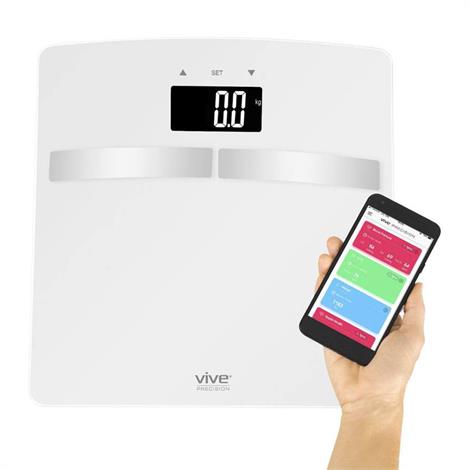
Activity Tracker
Another personal health monitoring device everyone should have is, of course, their activity tracker. An activity tracker is important because it makes you aware of how much you move around each day. As you know, it is recommended that you take at least 10,000 steps each day. If you don’t have a activity tracker, it is difficult to know just how many steps or exercise you get each day. If you did, you might be motivated to make some change in your life to get n some more exercise during your day.
Activity trackers usually also come with many other great features. For example many of them come with the ability to track your sleep. Sleep is actually something super important to our health. If you don’t get enough sleep, that it self and cause you more stress and could lead to health problems in the long run. Again, having a activity tracker to help you keep track of your sleep patterns can make you aware of whether or not you need to make changes in your life to prioritize sleep.
An excellent activity tracker is the YHE BP Doctor Pro Blood Pressure Smart Watch mentioned earlier, under the Blood Pressure Monitor section. In addition to letting you track you blood pressure, it gives you the ability to track your workouts, sleep, pulse, oxygen levels, and calories burned. One of the reasons this smart watch is superior to others is due to its ability to track blood pressure, something most smart watches don’t track.
Interpreting Your Personal Health Monitoring Devices
If you are not able to interpret the personal health monitoring device measures on your own, don’t worry. In fact you should not be interpreting the personal health monitoring device readings on your own. While the personal health monitoring device might give you a rough idea on how you are doing, you should always share the metrics with your healthcare provider to get their judgement.
It is good to be able to measure vital health metric as your blood pressure reading, temperature, or oxygen saturation when you don’t feel well. At least you would be able to provide your healthcare provider these important measures. After all, the numbers will provide more insight into your health than just looking at the few vitals taken during your normal doctor visits. This number might help your health care provider make a more accurate assessment of the cause of your health status.
Vital Personal Health Monitoring Devices
Having all of the five personal health monitoring devices at home will give you comprehensive picture about your health. However, the first three devices are especially vital. This is because they allow you to measure what healthcare professionals call your vital signs. In any hospital, these are the metrics that will tell your provider how you are doing.
Conclusion
As you can see, these five personal health monitoring devices available to help you keep track of various health indicators. It is important that you are aware of where you stand in various health measures. This is true both on a day to day basis and when you suspect something is off with your health. It might help you act in ways that will improve your health over the long run. Also, the information that you obtain well helpful not only to yourself but for your healthcare providers. Your healthcare provider will be able to take your findings into account when they make judgements about your health conditions.
If you don’t own these personal health monitoring devices at the moment, I urge you to consider purchasing them as soon as possible and start becoming more informed about your health. If you are interested in the particular products mentioned on this post, please visit the Wellness Tools page.


